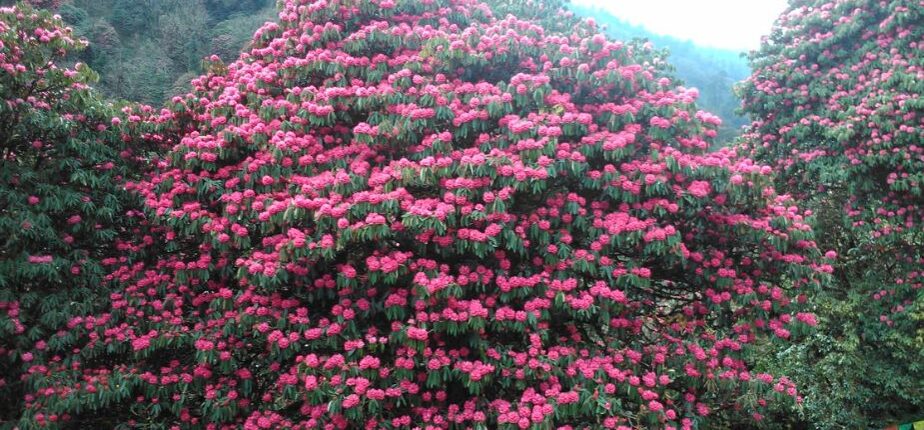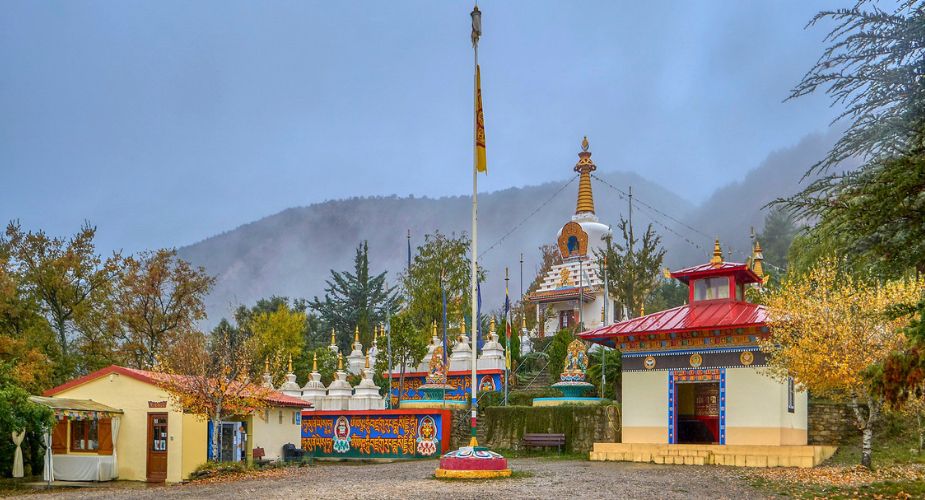Spring Wildflower Trekking in Nepal Himalayas: A Blooming Adventure


Wildflower Trekking in Nepal offers the perfect blend of mountain adventure and vibrant floral beauty. Nepal is the heaven of spring wildflowers. The Himalayan slopes burst into a vibrant symphony of colors. From late March to early June, the trekking trails transform into a floral paradise, adorned with blooming rhododendrons, primulas, magnolias, and rare alpine blossoms. The lush forests of Ghorepani, Langtang Valley, and Makalu Barun National Park glow with shades of red, pink, and white, creating a breathtaking contrast against the towering snow-capped peaks. This spectacular display makes Nepal a great destination for trekkers, offering not only adventure but also a mesmerizing experience of nature’s finest artistry.
Why Spring is the Best Season for Wildflower Trekking in Nepal
Spring (March–May) transforms Nepal’s trekking trails into botanical wonderlands:
- Rhododendron Blooms: Nepal’s national flower, the rhododendron, paints entire hillsides red, pink, and white.
- Mild Weather: Daytime temperatures range from 15°C to 20°C, ideal for trekking.
- Clear Skies: Post-winter clarity offers stunning views of peaks like Annapurna and Everest.
- Cultural Festivals: Time your trek with Nepali festivals like Holi (March) or Buddha Jayanti (May).
Top 5 Wildflower Treks in the Nepal Himalayas
-
Ghorepani Poon Hill Trek (Annapurna Region)
- Best For: Rhododendron forests and panoramic mountain views.
- Wildflower Highlights: Crimson Rhododendron arboreum, magnolias, and irises.
- Key Route: Tikhedhunga → Ghorepani → Poon Hill (3,210m).
- Why Go: Easy-moderate trail with teahouse stays. The Annapurna Conservation Area is a UNESCO site with over 1,200 plant species.
-
Langtang Valley Trek (Near Kathmandu)
- Best For: Alpine meadows and rare Himalayan flora
- Wildflower Highlights: Blue poppies (Meconopsis), primulas, and edelweiss.
- Key Route: Syabrubesi → Langtang Village → Kyanjin Gompa (3,870m).
- Why Go: Less crowded than Everest or Annapurna. Spot yaks grazing among wildflowers.
-
Lower Dolpo Trek (Western Nepal)
- Best For: Remote landscapes and medicinal herbs.
- Wildflower Highlights: Yellow Potentilla, purple larkspur, and juniper shrubs.
- Key Route: Juphal → Phoksundo Lake → Shey Gompa.
- Why Go: A hidden gem featured in the movie Himalaya. Requires a restricted area permit.

-
Everest Rhododendron Trek (Solu-Khumbu)
- Best For: Combining Everest views with floral trails.
- Wildflower Highlights: Dwarf rhododendrons (R. campanulatum), saxifrages.
- Key Route: Lukla → Namche Bazaar → Tengboche Monastery.
- Why Go: Trek through Sagarmatha National Park, a UNESCO World Heritage Site.
-
Milke Danda Trek (Eastern Nepal)
- Best For: Nepal’s largest rhododendron forest.
- Wildflower Highlights: Over 30 rhododendron species, orchids, and wild strawberries.
- Key Route: Tumlingtar → Milke Danda → Gupha Pokhari.
- Why Go: Rarely trekked, this route is a biodiversity hotspot.
Rhododendrons: Nepal has 33 species, including the iconic Rhododendron arboreum (Lali Gurans).
Primulas: Look for the Himalayan primrose (Primula denticulata) in shades of purple and pink. Medicinal Plants: Spikenard ( Nardostachys jatamansi) and Himalayan yew ( Taxus wallichiana).
“I never imagined Nepal’s wildflowers could be this breathtaking!”– Jessica Otte
Planning Your Spring Wildflower Trek
When to Go
March–April: Peak rhododendron blooms in lower elevations (1,000–2,500m).
May: Flowers bloom at higher altitudes (3,000m+), with clearer mountain views.
Essential Tips
- Permits: Acquire TIMS and national park permits (e.g., Annapurna Conservation Area Permit).
- Guides: Hire local guides familiar with flora (e.g., Botanical Treks Nepal).
- Packing List:
- Lightweight, layered clothing.
- Macro lens for flower photography.
- Reusable water bottle (avoid plastic)
Responsible Trekking Practices
- Stay on marked trails to protect fragile ecosystems.
- Avoid picking flowers or disturbing wildlife.
Cultural Encounters on the Trail
Spring treks coincide with Nepali festivals:
- Holi (March): Celebrate the “festival of colors” in villages like Ghorepani.
- Buddha Jayanti (May): Join prayers at monasteries in Tengboche or Namche.

FAQs: Spring Wildflower Treks in Nepal
Q: Are spring wildflower treks safe for beginners?
A: Yes! Trails like Ghorepani Poon Hill are beginner-friendly. Avoid high-altitude routes like Upper Dolpo.
Q: What’s the best camera gear for flower photography?
A: A DSLR with a 60mm or 100mm macro lens. Use a polarizing filter to enhance colors.
Q: Can I see wildflowers in the Everest region?
A: Yes! Lower Everest trails (below 3,500m) bloom with rhododendrons in April.
Final Thoughts
Spring wildflower treks in the Nepal Himalayas blend natural beauty, adventure, and culture. Whether you’re a botany enthusiast or a casual hiker, walking through valleys carpeted in blooms—with snow-capped peaks as your backdrop—is an unforgettable experience. Pro Tip: Pair your trek with a visit to Kathmandu’s Garden of Dreams to unwind post-adventure!







